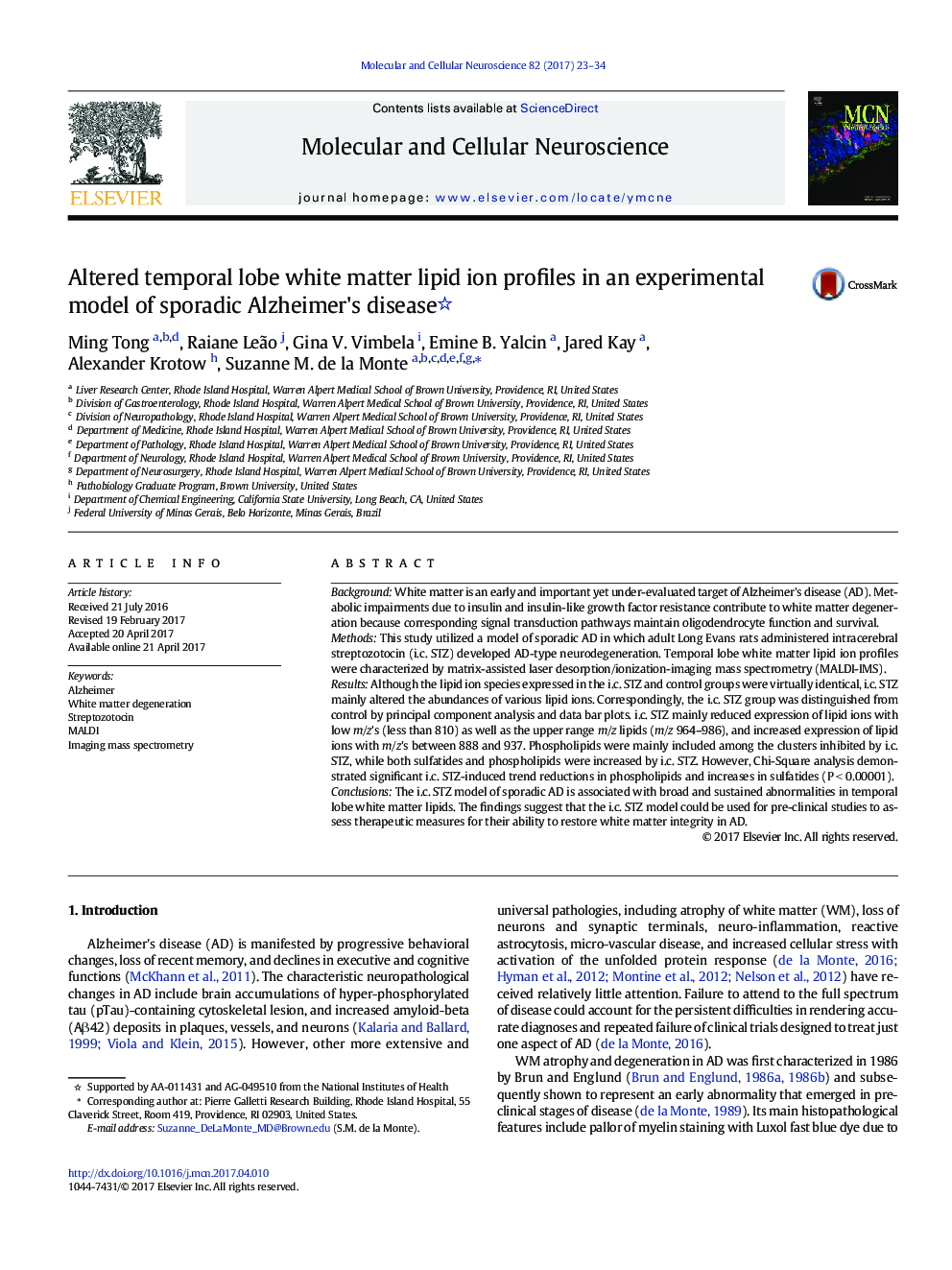| کد مقاله | کد نشریه | سال انتشار | مقاله انگلیسی | نسخه تمام متن |
|---|---|---|---|---|
| 5534342 | 1551124 | 2017 | 12 صفحه PDF | دانلود رایگان |
- MALDI-IMS detected altered temporal white matter lipid profiles in an i.c.-STZ model of sporadic Alzheimer's disease.
- The main effects of i.c.-STZ were to increase temporal lobe white matter abundance of sulfatides and decrease phospholipids.
- The striking abnormalities in lipid ion profiles could be used to assess Alzheimer-type white matter neurodegeneration.
BackgroundWhite matter is an early and important yet under-evaluated target of Alzheimer's disease (AD). Metabolic impairments due to insulin and insulin-like growth factor resistance contribute to white matter degeneration because corresponding signal transduction pathways maintain oligodendrocyte function and survival.MethodsThis study utilized a model of sporadic AD in which adult Long Evans rats administered intracerebral streptozotocin (i.c. STZ) developed AD-type neurodegeneration. Temporal lobe white matter lipid ion profiles were characterized by matrix-assisted laser desorption/ionization-imaging mass spectrometry (MALDI-IMS).ResultsAlthough the lipid ion species expressed in the i.c. STZ and control groups were virtually identical, i.c. STZ mainly altered the abundances of various lipid ions. Correspondingly, the i.c. STZ group was distinguished from control by principal component analysis and data bar plots. i.c. STZ mainly reduced expression of lipid ions with low m/z's (less than 810) as well as the upper range m/z lipids (m/z 964-986), and increased expression of lipid ions with m/z's between 888 and 937. Phospholipids were mainly included among the clusters inhibited by i.c. STZ, while both sulfatides and phospholipids were increased by i.c. STZ. However, Chi-Square analysis demonstrated significant i.c. STZ-induced trend reductions in phospholipids and increases in sulfatides (PÂ <Â 0.00001).ConclusionsThe i.c. STZ model of sporadic AD is associated with broad and sustained abnormalities in temporal lobe white matter lipids. The findings suggest that the i.c. STZ model could be used for pre-clinical studies to assess therapeutic measures for their ability to restore white matter integrity in AD.
Journal: Molecular and Cellular Neuroscience - Volume 82, July 2017, Pages 23-34
